patient care tech study guide
Patient Care Technicians (PCTs) play a vital role in healthcare, providing direct patient care and supporting medical teams․ Their responsibilities include assisting with daily patient needs, monitoring vital signs, and ensuring patient safety and comfort․ PCTs work in hospitals, clinics, and long-term care facilities, serving as essential links between patients and healthcare providers․ This role requires compassion, strong communication skills, and the ability to work effectively in fast-paced environments․ PCTs are crucial for delivering high-quality patient care and supporting the overall healthcare system․
1․1 Overview of Patient Care Technician Responsibilities
Patient Care Technicians (PCTs) are responsible for providing direct patient care under the supervision of nurses and other healthcare professionals․ Their duties include assisting with daily living activities such as bathing, dressing, and feeding patients․ PCTs also measure vital signs, help with patient transfers, and prepare patients for medical exams or procedures․ They maintain patient rooms, ensure a clean and safe environment, and assist with medical equipment․ Additionally, PCTs observe patient conditions, report changes to the healthcare team, and provide emotional support to patients and their families․ Their role is essential for ensuring high-quality, compassionate care in various healthcare settings․
1․2 Importance of PCTs in Healthcare Settings
Patient Care Technicians (PCTs) are indispensable in healthcare settings, bridging the gap between patients and medical teams․ They provide essential support with daily care tasks, enabling nurses and doctors to focus on complex medical procedures․ PCTs ensure patients receive timely assistance, improving overall care efficiency and patient satisfaction․ Their role in monitoring vital signs and reporting changes helps in early detection of health issues, preventing complications․ Additionally, PCTs contribute to maintaining a clean and safe environment, reducing infection risks․ Their compassionate care enhances patients’ well-being, making them a vital component of the healthcare system․
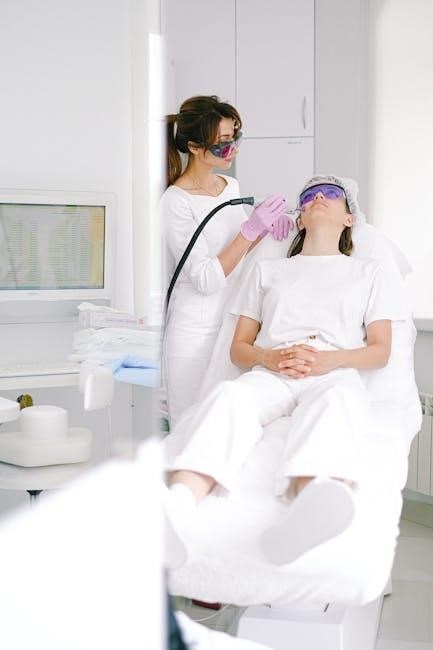
Education and Training for Patient Care Technicians
Becoming a Patient Care Technician requires completing a training program or certification course, often through vocational schools or community colleges, focusing on patient care skills and medical procedures․
2․1 Required Certifications and Licensing
Patient Care Technicians typically need certifications such as Certified Nursing Assistant (CNA) or Certified Patient Care Technician (CPCT)․ Requirements vary by state, with some demanding licensing․ Many employers prefer BLS/CPR certification․ Background checks are often mandatory․ These credentials ensure competency and adherence to healthcare standards, preparing PCTs for clinical responsibilities and patient interaction․ Gaining these certifications enhances job prospects and demonstrates commitment to professional growth in the healthcare field․
2․2 Recommended Training Programs for PCTs
Recommended training programs for Patient Care Technicians (PCTs) typically include both classroom instruction and clinical practice․ These programs are often offered at vocational schools, community colleges, or medical training institutes․ Curricula cover essential skills like vital sign measurement, patient mobility, and infection control․ Many programs last several months to a year and include hands-on training in healthcare settings․ Accredited programs ensure students gain comprehensive knowledge and practical experience, preparing them for certification exams and entry into the healthcare workforce․ Students are encouraged to research programs approved by state licensing boards or professional organizations for the best outcomes․
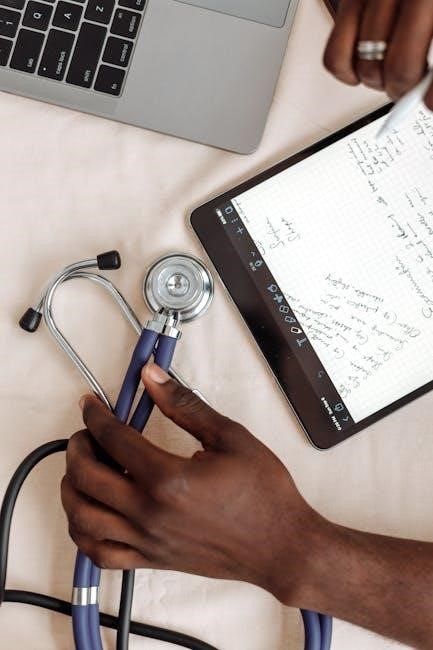
Clinical Skills for Patient Care Technicians
PCTs must master vital sign measurement, patient mobility techniques, and basic life support․ These skills ensure accurate patient assessments and safe care delivery in clinical settings․
3․1 Vital Signs Measurement (Blood Pressure, Pulse, etc․)
Vital signs measurement is a cornerstone of patient care․ Accurately assessing blood pressure, pulse, respiratory rate, temperature, and oxygen saturation provides essential data for patient evaluations․ PCTs must use appropriate equipment and techniques to ensure reliability․ Proper positioning, cuff size for blood pressure, and pulse palpation are critical․ Regular practice and adherence to infection control protocols maintain patient safety․ These measurements help healthcare teams monitor patient conditions, detect changes, and make informed decisions․ Proficiency in vital sign assessment is a key skill for PCTs to deliver effective care․
3․2 Patient Mobility and Transfer Techniques
Patient mobility and transfer techniques are essential skills for PCTs to ensure patient safety and comfort․ Proper methods, such as using slide boards or lifts, prevent injuries to both patients and caregivers․ Assessing a patient’s strength and mobility helps determine the best approach․ Maintaining balance, using correct body mechanics, and encouraging patient participation are key․ Regular training in transfer techniques is crucial to avoid accidents․ These skills promote patient independence, reduce the risk of falls, and help prevent complications like pressure sores or muscle atrophy․ Effective mobility assistance is vital for maintaining patient dignity and overall well-being․
3․3 Basic Life Support and CPR
Basic Life Support (BLS) and CPR are critical skills for Patient Care Technicians (PCTs) to respond to cardiac emergencies․ PCTs must recognize signs of cardiac arrest, such as unresponsiveness and lack of breathing, and initiate CPR immediately․ Proper technique involves chest compressions and rescue breaths to maintain blood circulation and oxygenation․ Automated External Defibrillators (AEDs) are also essential tools that PCTs should be trained to use․ Regular certification and practice are required to ensure proficiency․ These skills are vital for improving patient outcomes and preventing complications during emergencies․ BLS training is a cornerstone of patient care, emphasizing quick and effective action to save lives․
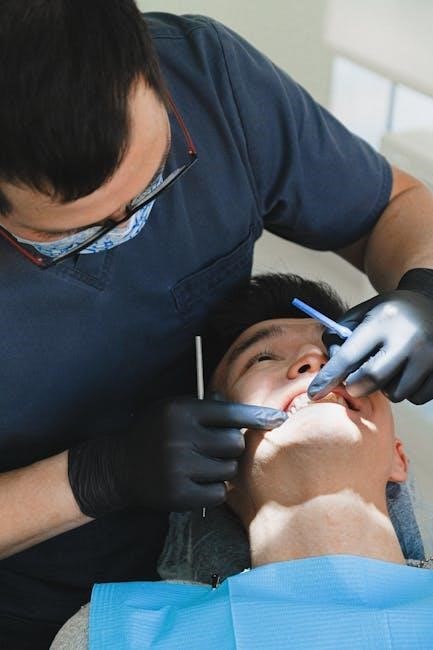
Infection Control and Safety Protocols
Infection control and safety protocols are crucial for preventing the spread of diseases․ They include proper hand hygiene, use of PPE, and safe handling of infectious materials and waste․
4․1 Hand Hygiene and Sterilization Practices
Hand hygiene is a critical practice for infection control, requiring the use of alcohol-based hand sanitizers or soap and water․ Proper technique involves rubbing hands for at least 20 seconds, ensuring all surfaces are cleaned․ Sterilization practices involve methods like autoclaving to eliminate pathogens, while disinfection reduces microbial load․ Cleaning surfaces and equipment regularly is essential to prevent the spread of infections․ These practices are fundamental for maintaining a safe environment for both patients and healthcare workers, reducing the risk of hospital-acquired infections and ensuring compliance with healthcare standards․
4․2 Use of Personal Protective Equipment (PPE)
Personal Protective Equipment (PPE) is essential for preventing the spread of infections in healthcare settings․ PPE includes gloves, masks, gowns, and eye protection, each serving specific purposes․ Proper use of PPE involves donning and doffing techniques to avoid contamination․ Gloves protect against bodily fluids, while masks reduce airborne pathogen transmission․ Gowns and eye protection are used in high-risk situations․ PPE selection depends on the task and patient condition, ensuring safety for both patients and staff․ Adhering to PPE protocols is critical for infection control and maintaining a safe care environment, minimizing the risk of exposure and promoting compliance with healthcare guidelines․
4․3 Safe Handling of Biohazardous Materials
Safe handling of biohazardous materials is critical to prevent exposure and infection․ Biohazardous materials include blood, bodily fluids, and contaminated items․ Proper identification and labeling of biohazardous waste are essential․ Use appropriate PPE, such as gloves and masks, when handling these materials․ Secure storage in designated containers and proper disposal through autoclaving or incineration are required․ Follow facility protocols for spill cleanup and decontamination․ Training on biohazardous material handling is mandatory for compliance with safety regulations․ Regular updates on protocols ensure adherence to evolving guidelines, minimizing risks to patients, staff, and the environment while maintaining regulatory compliance․
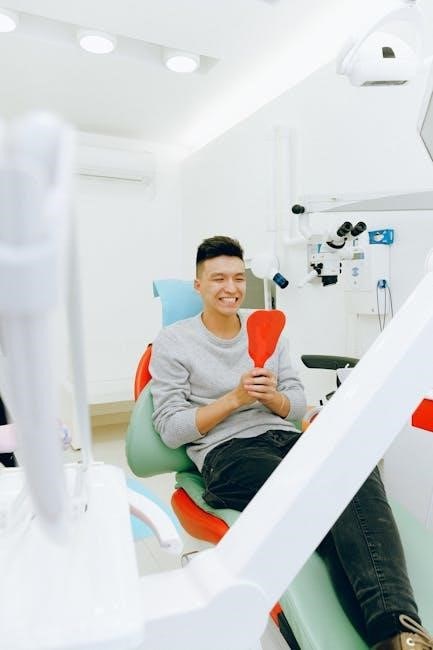
Communication and Interpersonal Skills
Effective communication and interpersonal skills are essential for PCTs to build trust with patients, families, and healthcare teams․ Clear, empathetic, and culturally sensitive interactions ensure understanding and collaboration․
5․1 Effective Patient Communication Strategies
Effective patient communication involves active listening, empathy, and clarity․ PCTs should use simple language, maintain eye contact, and adapt their approach to patients’ cultural and cognitive needs․ Encouraging patients to express concerns and providing reassurance fosters trust․ Clear explanations of procedures reduce anxiety, while regular updates keep patients informed․ Non-verbal cues, such as body language, also play a crucial role in conveying compassion and professionalism․ Effective communication ensures patients feel heard, respected, and supported, enhancing their overall care experience and satisfaction․
5․2 Collaborating with Healthcare Teams
Collaborating with healthcare teams is essential for PCTs to ensure comprehensive patient care․ Effective teamwork involves clear communication, mutual respect, and understanding of each team member’s role․ PCTs should actively contribute to discussions, share patient observations, and follow instructions from nurses and physicians․ Building strong relationships with colleagues enhances workflow efficiency and patient outcomes․ Respectful communication and a willingness to assist teammates foster a positive work environment․ By working together seamlessly, healthcare teams can provide coordinated, high-quality care that meets patient needs and promotes better health outcomes․
5․3 Cultural Competence in Patient Care
Cultural competence is vital for PCTs to provide care that respects patients’ diverse backgrounds, beliefs, and values․ Understanding cultural differences helps PCTs address unique patient needs effectively․ This includes being sensitive to language barriers, religious practices, and personal preferences․ By fostering an inclusive environment, PCTs can improve patient satisfaction and trust in healthcare services․
Strategies for cultural competence involve active listening, using interpreters when needed, and staying informed about diverse cultural practices․ PCTs should also remain aware of their own biases and adapt care approaches to meet individual patient needs․ This ensures respectful, person-centered care that honors each patient’s identity and promotes positive health outcomes․

Legal and Ethical Considerations
Legal and ethical practices are essential in patient care, ensuring patient rights are protected and professional standards are maintained to uphold trust and integrity in healthcare․
6․1 Patient Confidentiality and HIPAA Compliance
Patient confidentiality is a cornerstone of healthcare ethics, protected under the Health Insurance Portability and Accountability Act (HIPAA)․ PCTs must adhere to strict guidelines to safeguard patient health information (PHI) from unauthorized access or disclosure․ This includes refraining from sharing PHI without consent, using secure communication methods, and ensuring electronic records are encrypted․ Violations of HIPAA can result in legal consequences, including fines and penalties․ Maintaining confidentiality builds trust between patients and healthcare providers, ensuring ethical care delivery․ PCTs must stay informed about HIPAA updates and workplace policies to comply with these critical legal standards․
6․2 Ethical Dilemmas in Patient Care
Ethical dilemmas in patient care often arise when conflicting values or principles guide decision-making․ PCTs may face challenges such as balancing patient autonomy with safety, managing end-of-life care preferences, or addressing cultural differences that influence treatment decisions․ Confidentiality, informed consent, and resource allocation are common ethical concerns․ PCTs must navigate these situations with empathy, professionalism, and adherence to ethical guidelines․ Seeking guidance from supervisors or ethics committees can help resolve complex issues while maintaining patient-centered care․ Addressing ethical dilemmas requires strong moral reasoning and a commitment to upholding patient rights and dignity in all situations․
6․3 Understanding Patient Rights and Advocacy
Understanding patient rights and advocacy is crucial for PCTs to ensure ethical care․ Patients have the right to informed consent, autonomy, confidentiality, and dignity․ PCTs must respect these rights, supporting patients in making decisions about their care․ Advocacy involves acting in the patient’s best interest, especially when they cannot speak for themselves․ This includes addressing concerns, ensuring access to resources, and upholding legal and ethical standards․ PCTs should be aware of patients’ rights to refuse treatment, access medical records, and receive culturally sensitive care․ Effective advocacy enhances trust and improves patient outcomes, making it a cornerstone of quality healthcare․

Documentation and Reporting
Accurate and timely documentation is critical for continuity of care․ PCTs must maintain clear, concise records of patient vital signs, treatments, and responses to interventions․ Proper reporting ensures legal compliance and effective communication between healthcare team members, supporting informed decision-making and high-quality patient care․
7․1 Accurate Charting and Record-Keeping
Accurate charting and record-keeping are essential for maintaining high-quality patient care․ PCTs must document patient vital signs, treatments, and responses to interventions clearly and concisely․ This ensures continuity of care and legal compliance․ Proper documentation helps healthcare teams make informed decisions and communicate effectively․ Errors in charting can lead to miscommunication, legal issues, or patient harm․ PCTs should adhere to standardized formats and double-check entries for accuracy․ Timely updates and legible handwriting are critical․ Accurate records also support billing processes and patient history tracking, making them a cornerstone of effective healthcare management and patient safety․
7․2 Incident Reporting and Documentation
Incident reporting and documentation are critical for maintaining patient safety and accountability․ PCTs must document any unusual events, injuries, or near-misses involving patients or staff․ Accurate and detailed reports ensure transparency and legal protection․ Timely reporting prevents delays in addressing issues․ Incidents should be recorded objectively, focusing on facts rather than opinions․ This helps in investigating causes and implementing preventive measures․ Proper documentation also supports quality improvement efforts and protects both patients and healthcare workers․ By adhering to incident reporting protocols, PCTs contribute to a safer and more accountable care environment․
7․4 Electronic Health Records (EHR) Navigation
Electronic Health Records (EHR) navigation is essential for Patient Care Technicians to efficiently manage patient data․ PCTs must accurately document vital signs, treatments, and patient interactions within EHR systems․ Proper navigation ensures timely access to patient histories, lab results, and care plans․ Familiarity with EHR systems streamlines workflows, reducing errors and improving care coordination․ PCTs should understand privacy protocols, such as HIPAA compliance, when accessing or updating records․ Proficiency in EHR navigation enhances patient safety, communication, and overall care quality․ Training and practice are key to mastering these digital tools effectively in healthcare settings․
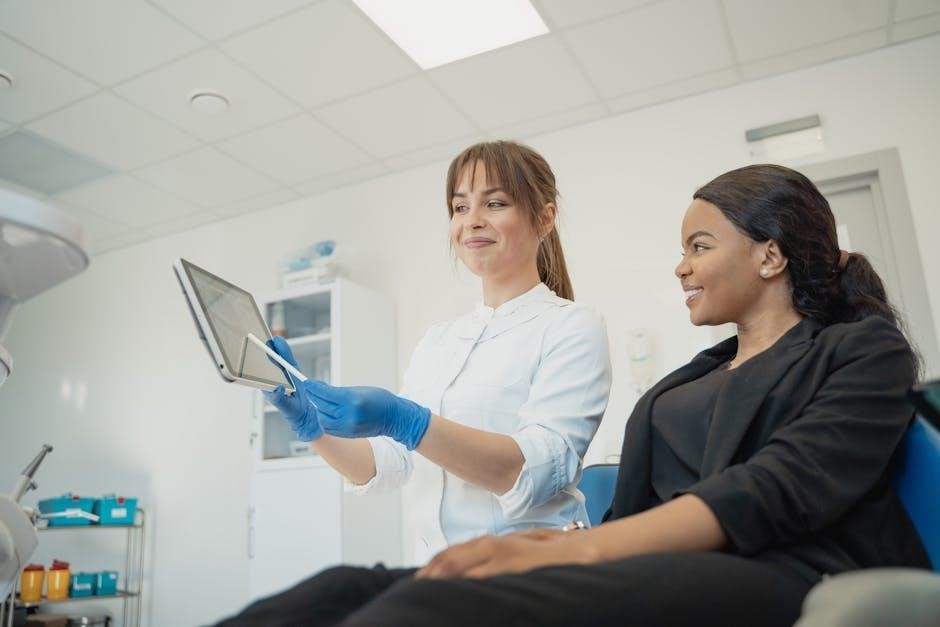
Career Development and Advancement
Patient Care Technicians can advance their careers through continuing education, certifications, and specialization in specific patient populations; Leadership roles and further training in specialized care areas are also available․
8․1 Continuing Education Requirements
Continuing education is essential for Patient Care Technicians to stay updated on medical practices and maintain certifications․ Many employers require PCTs to complete annual training hours, focusing on patient safety, infection control, and new technologies․ Additionally, certifications like Certified Nursing Assistant (CNA) or Certified Patient Care Technician (CPCT) often require renewal through ongoing education․ PCTs can pursue specialized courses in areas like geriatric care or phlebotomy to enhance their skills․ Engaging in professional development not only improves job performance but also opens opportunities for career advancement and higher-paying roles in healthcare․
8․2 Specializing in Specific Patient Populations
Patient Care Technicians can specialize in caring for specific patient groups, such as geriatric, pediatric, or oncology patients․ Specializing allows PCTs to develop deeper expertise and provide tailored care․ For example, geriatric care focuses on mobility and chronic disease management, while pediatric care emphasizes developmental needs and emotional support․ Specialization enhances job satisfaction and opens doors to niche roles․ Additionally, it enables PCTs to build stronger relationships with patients and families, improving overall care quality․ Pursuing specialized certifications or training can further validate their expertise and make them more competitive in the job market․
8․3 Leadership Opportunities for PCTs
Patient Care Technicians (PCTs) can pursue leadership roles as they gain experience and certifications․ With advanced training, PCTs can become lead technicians, shift supervisors, or mentors for new staff․ Leadership roles involve coordinating care, managing workflows, and ensuring team efficiency․ Experienced PCTs may also transition into specialized positions, such as unit coordinators or educators, training new PCTs․ Strong communication, decision-making, and organizational skills are essential for leadership success․ Leadership opportunities allow PCTs to shape patient care practices, improve team dynamics, and advance their careers in healthcare․ These roles highlight the potential for professional growth and impact within the field․
Common Challenges and Solutions
PCTs often face stress, burnout, and difficult patient interactions․ Solutions include stress management techniques, effective communication, and seeking support from healthcare teams to ensure patient and professional well-being․
9․1 Managing Stress and Burnout
Managing stress and burnout is crucial for PCTs due to the emotionally demanding nature of their work․ Techniques like deep breathing, meditation, and time management can help reduce stress․ Setting realistic expectations and prioritizing self-care are also essential․ Burnout can be mitigated by seeking support from colleagues and supervisors, as well as engaging in hobbies outside of work․ Employers can assist by promoting a healthy work environment and providing access to mental health resources․ Regular exercise and adequate sleep also play a significant role in maintaining emotional and physical well-being․
9․2 Navigating Difficult Patient Interactions
Navigating difficult patient interactions requires empathy, professionalism, and strong communication skills․ Remaining calm and composed, even in challenging situations, helps de-escalate tensions․ Active listening and acknowledging the patient’s feelings can build trust and understanding․ It’s important to maintain clear boundaries while showing compassion․ Focusing on the patient’s needs rather than their emotions can help redirect the conversation․ If necessary, involving a supervisor or healthcare provider can provide additional support․ Cultural competence and sensitivity also play a key role in effectively managing such interactions․ Reflecting on these encounters can help improve future interactions and overall patient care․
9․3 Staying Updated on Medical Practices
Staying updated on medical practices is essential for Patient Care Technicians to provide effective care․ This involves participating in continuing education, attending training sessions, and staying informed about new technologies and procedures․ PCTs should regularly review industry guidelines and updates from professional organizations․ Engaging in online courses, workshops, and webinars can enhance knowledge and skills․ Collaborating with healthcare teams and sharing insights fosters a culture of continuous learning․ By staying current, PCTs ensure they deliver safe, evidence-based care and adapt to evolving healthcare standards․ This commitment to lifelong learning improves patient outcomes and maintains professional competence․
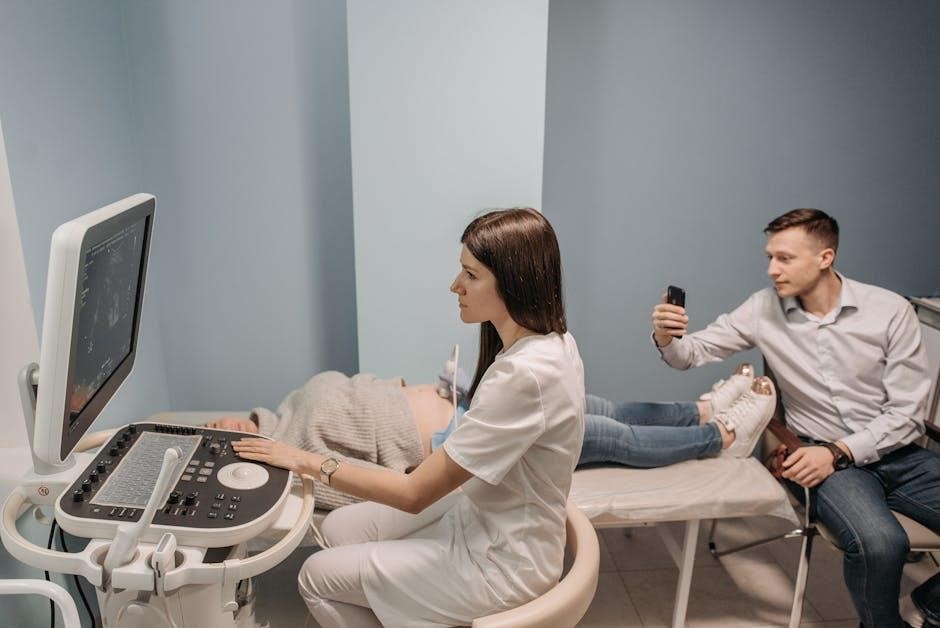
Job Search and Interview Preparation
Securing a PCT position requires a strong resume, cover letter, and interview skills․ Research common questions, practice responses, and showcase relevant experience and certifications to stand out․
10․1 Crafting a Strong Resume and Cover Letter
A well-crafted resume and cover letter are essential for a Patient Care Technician job search․ Highlight relevant certifications, training, and hands-on experience in patient care․ Use clear, concise language to detail your skills in vital sign measurement, patient mobility, and infection control․ Tailor your cover letter to the specific job, demonstrating how your background aligns with the employer’s needs․ Emphasize soft skills like communication and empathy, as these are crucial in patient care roles․ Ensure your documents are error-free and professionally formatted to make a strong first impression on hiring managers․
10․2 Common PCT Interview Questions
When preparing for a Patient Care Technician interview, expect questions about your clinical skills, patient interaction experiences, and problem-solving abilities․ Common questions include, “Why do you want to work in healthcare?” or “How would you handle a difficult patient?” Employers may also ask scenario-based questions, such as how you would respond to a patient’s fall or a coding emergency․ Be ready to discuss your training, certifications, and hands-on experiences․ Highlight your ability to work in a team, communicate effectively, and manage stress․ Demonstrating empathy, professionalism, and a patient-centered approach will help you stand out during the interview․
10․3 Tips for Acing the Interview
To excel in your PCT interview, research the facility beforehand to show genuine interest․ Practice answering common questions about patient care scenarios and your training․ Dress professionally and arrive early to demonstrate responsibility․ Maintain confident body language and eye contact․ Highlight your passion for patient care and willingness to learn․ Be specific when sharing examples of your experience, focusing on teamwork and problem-solving․ Ask insightful questions about the role and work environment․ Follow up with a thank-you note to express gratitude and reiterate your enthusiasm for the position․
Pursuing a career as a Patient Care Technician offers a rewarding path in healthcare, combining compassion, skill development, and opportunities to make a meaningful impact on patient lives․
11․1 Summary of Key Takeaways
Becoming a Patient Care Technician requires a blend of clinical skills, emotional resilience, and strong communication abilities․ Key takeaways include the importance of proper training, certifications, and continuous education to excel in this role․ Understanding infection control, patient safety, and ethical practices is crucial․ Effective communication with patients and healthcare teams ensures seamless care delivery․ Additionally, staying updated on medical advancements and navigating challenges like stress management are essential for long-term success in this rewarding field․
11․2 Encouragement for Future PCTs
Pursuing a career as a Patient Care Technician is a rewarding and impactful choice․ You will have the opportunity to make a meaningful difference in patients’ lives, providing essential care and support during their most vulnerable moments․ With dedication and empathy, you can excel in this role and grow both personally and professionally․ Embrace the challenges as opportunities to learn and grow, and remember that your work contributes directly to improving patient outcomes․ Stay committed, and you will find fulfillment in this vital role within the healthcare system․

Additional Resources
Explore textbooks, online courses, and professional associations for in-depth learning․ Utilize study guides and training platforms to enhance your PCT knowledge and skills effectively․
12․1 Recommended Textbooks and Study Guides
For comprehensive learning, key textbooks include Patient Care Technician: Anatomy & Physiology Workbook and Phlebotomy Handbook․ These resources cover essential topics like vital signs, patient mobility, and infection control․ Additionally, EKG Technician Study Guide is valuable for understanding electrocardiography․ Recommended study guides like PCT Exam Prep offer practice questions and case studies to prepare for certification exams․ Clinical Skills Manual for PCTs provides hands-on practice for procedures, while NCLEX-PN Review aids in advancing patient care knowledge․ These resources ensure well-rounded skill development and exam readiness for aspiring PCTs․
12․2 Online Courses and Training Platforms
Top online platforms for PCT training include Coursera, Udemy, and edX, offering courses from institutions like Johns Hopkins University․ American Red Cross provides certified training in CPR and first aid․ NHA (National Healthcareer Association) offers specialized courses for phlebotomy and EKG․ HealthStream and SkillSoft deliver interactive modules for clinical skills and patient safety․ These platforms provide flexible learning options, allowing PCTs to enhance their knowledge and skills remotely․ Many courses include simulations and hands-on practice, ensuring practical application of learned concepts․
12․3 Professional Associations for PCTs
Professional associations like the National Healthcareer Association (NHA) and American Medical Technologists (AMT) provide PCTs with networking opportunities, certifications, and professional development resources․ The National Association of Health Care Assistants (NAHCA) focuses on advancing the role of healthcare assistants through education and advocacy․ Additionally, the American Red Cross offers certifications in CPR and first aid, while the American Hospital Association (AHA) provides training and resources for patient care․ These organizations play a crucial role in helping PCTs stay updated on industry standards and best practices, fostering career growth and excellence in patient care․


